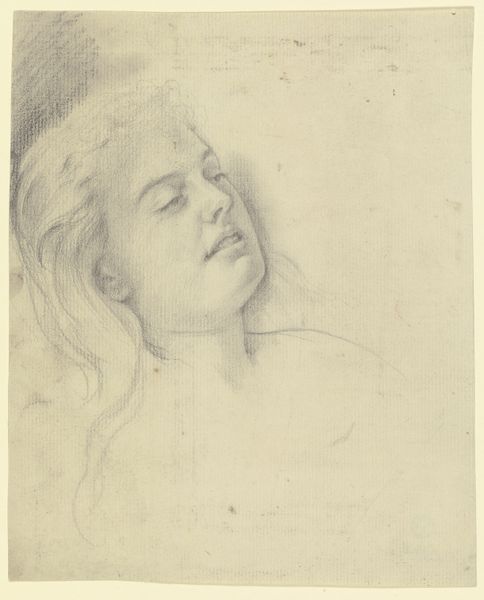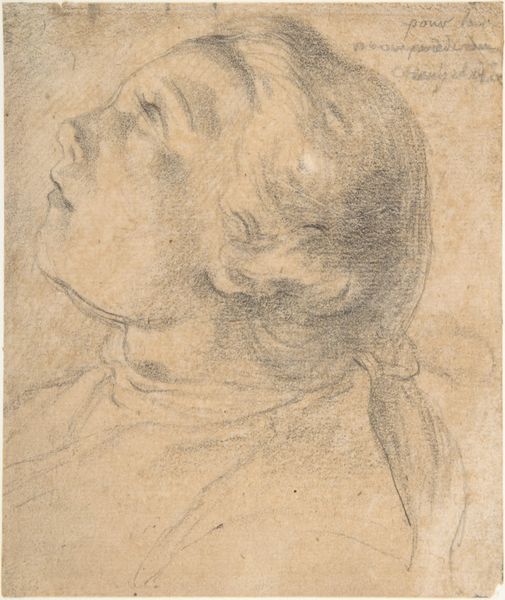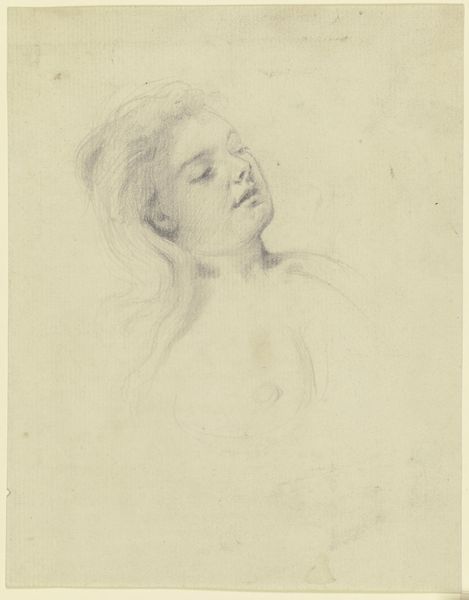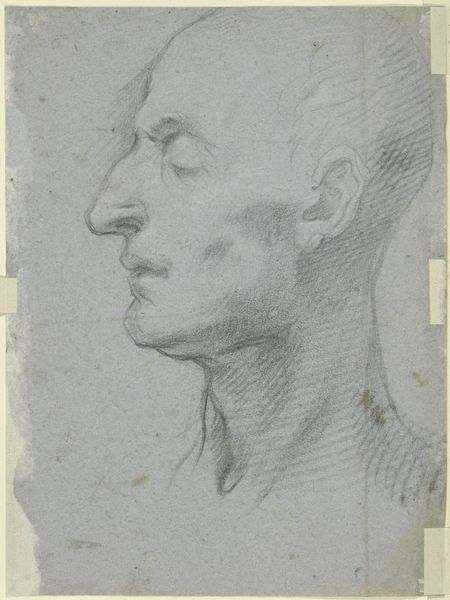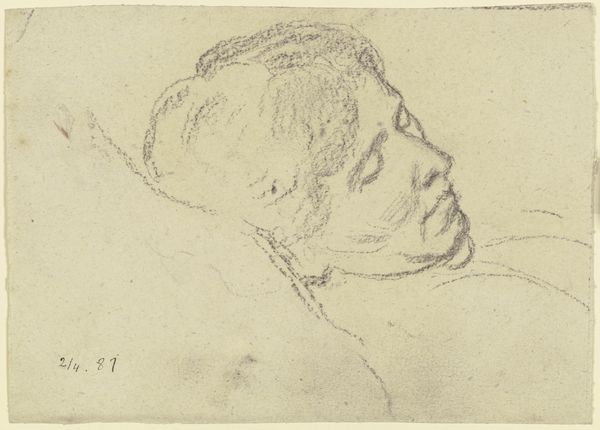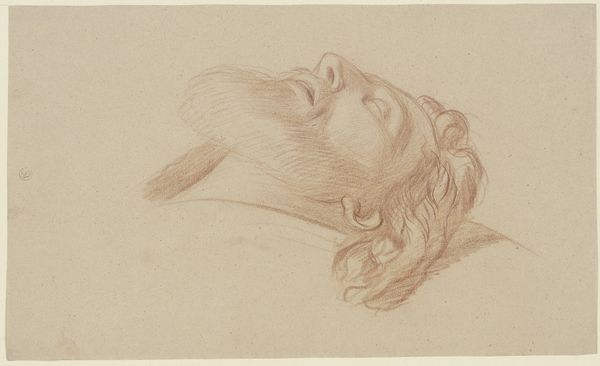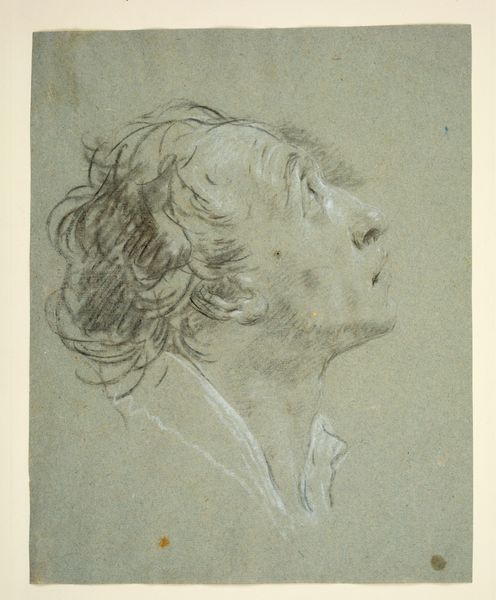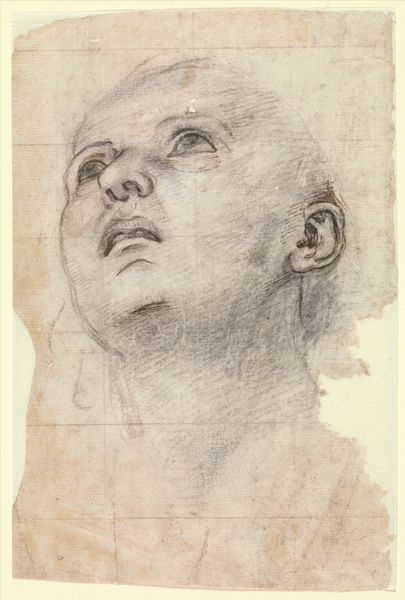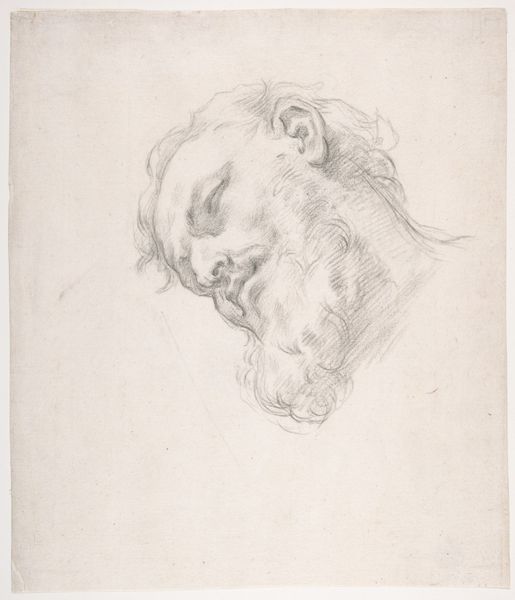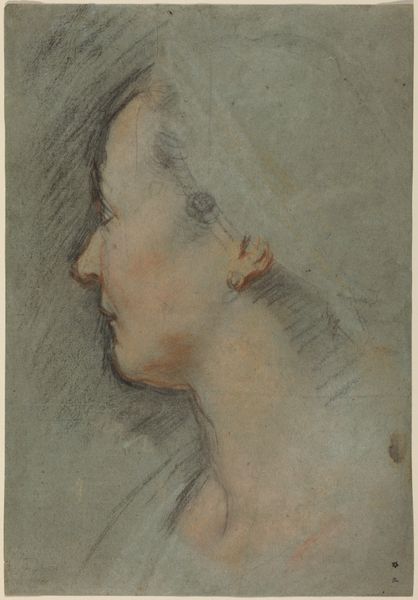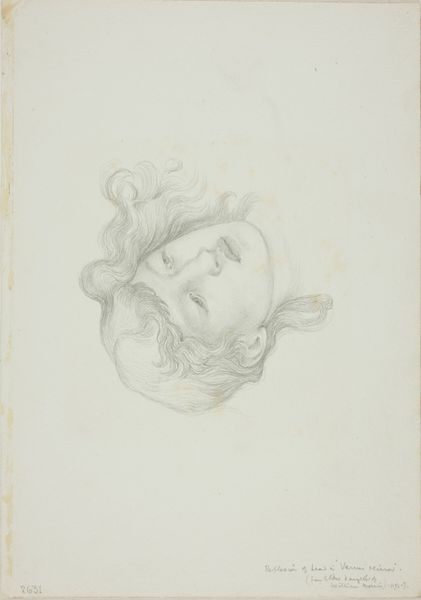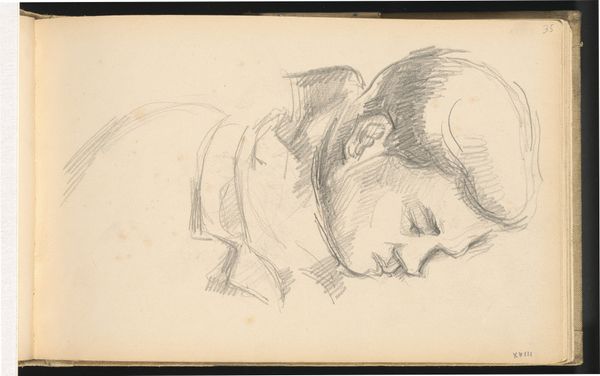
drawing, paper, pencil
#
portrait
#
drawing
#
figuration
#
paper
#
11_renaissance
#
pencil
#
italian-renaissance
Dimensions: 252 mm (height) x 182 mm (width) (bladmaal)
Curator: What immediately strikes me about this Renaissance drawing titled "Two studies of male faces" is the sheer volume the artist achieves with such delicate strokes. I believe this piece dates to sometime between 1550 and 1599. It now resides at the SMK, the National Gallery of Denmark. Editor: My first thought echoes that; it's the stark simplicity of the image that pulls you in. They seem almost archetypal, the way they're positioned facing opposite directions; a dichotomy seems evident. Curator: Absolutely, there's a compelling visual tension created by the opposing gazes, it hints at unseen narratives between them. Renaissance drawings often served as preparatory studies, and were thus rarely ever displayed as final works in their own right. Consider how that effects our reading of a piece like this now as a finished artistic statement. Editor: Fascinating point. Look at the downward gaze of the bottom figure compared to the upturned face above. Perhaps one represents earthly concerns, the other aspiring to the heavens. Notice the Renaissance predilection of portraying man’s reach in parallel to God’s benevolence. Curator: You've picked up on something intriguing, connecting their directions to spiritual and earthly realms, and its role within Renaissance conceptions of humankind's potential! The medium, pencil on paper, also underscores the immediacy of artistic expression during this era. Pencil was then allowing the Renaissance artist the flexibility that paintings maybe lacked. Editor: The drawing has an ephemeral quality—it feels less like a declaration and more like a fleeting thought, almost caught mid-process, allowing the image to represent states of transience. Also, the subjects almost bear a similarity, indicating a psychological relationship that has ties to theories about introspection and self regard that were in discourse during that era. Curator: Considering that Renaissance portraiture was profoundly linked to social status and political power, studies such as these provided artists to develop technical skill, to practice the capturing of realistic depictions of anatomy without the demands and trappings of those more formal conventions. Editor: Precisely. These “Two Studies” let the viewer observe how the physical attributes can provide insight into someone's inherent qualities or destiny through facial representation. These quick Renaissance studies are more charged with emotive capabilities. Curator: Looking closer, I can really see the benefit of artworks being present in modern galleries, allowing us to experience this historical context that, if it wasn’t for art, might have otherwise been lost forever. Editor: Indeed, bringing the psychology of form from that time forward to our contemporary audiences—it resonates profoundly.
Comments
No comments
Be the first to comment and join the conversation on the ultimate creative platform.
